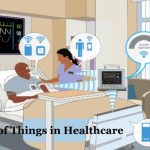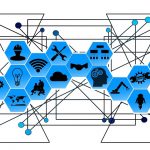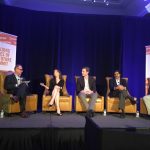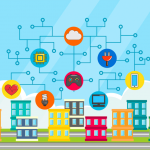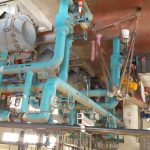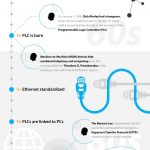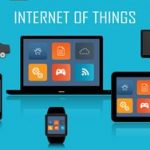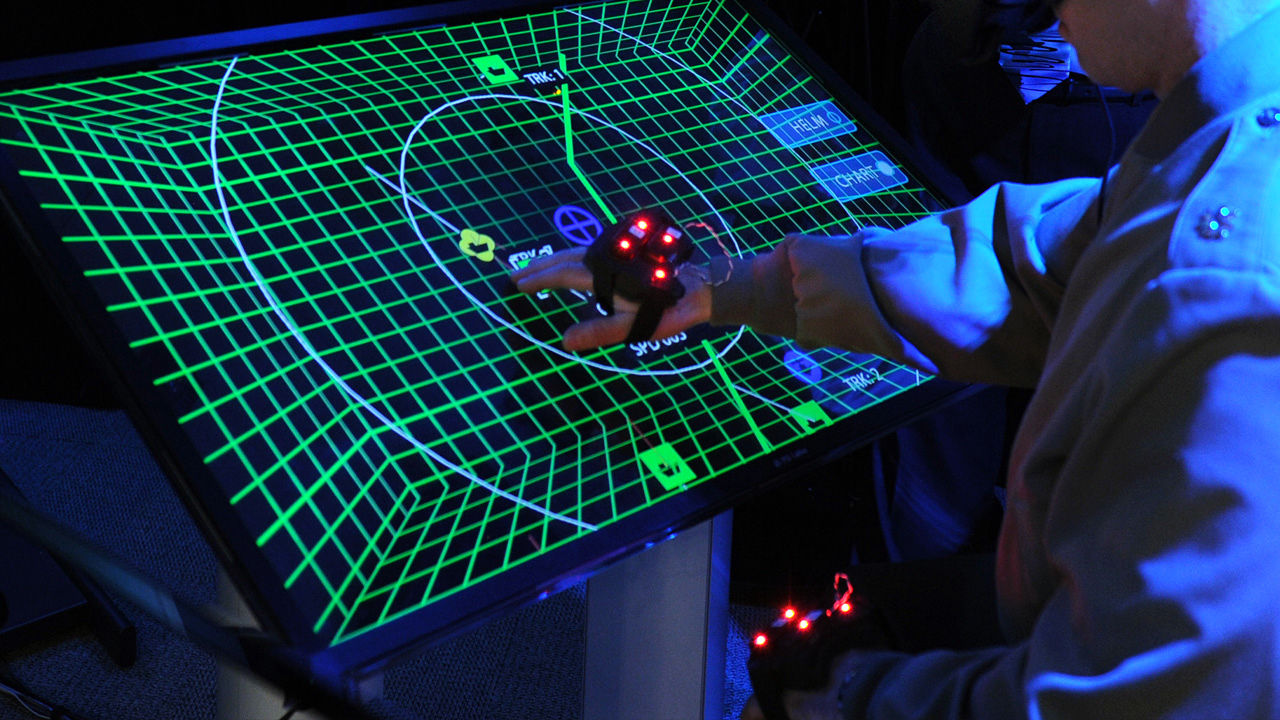How The internet Of issues Is altering Work
right here’s how technologists suppose the world of IoT will alternate the place of business—and how it’s already changing how we do business today.
November three, 2015
The internet of things (IoT) is an exhilarating concept, a future where “billions of issues are talking to each other,” as expertise consulting company SAP describes it. We’ve seen gadgets and home home equipment hook up with the internet and ping your smartphone with information, but it surely’s turning into extra clear that these toys are a prelude to a vastly linked world. And but, we spend most of our day at work. here’s how technologists assume the sector of IoT will change the place of job—and how it’s already altering how we do business lately.
First, let go of that image of gadgets and devices chatting amiably. The IoT world could have so much data coming in from so many sources that the problem might be in making any experience of it at all. As expertise author Anthony D. Williams posted in 2011, “nearly each animate and inanimate object on this planet will be producing and transmitting information, together with our properties, our cars, our natural and man-made environments, and yes, even our bodies.”
related: HR Meets knowledge: How Your Boss Will reveal You To Create The Quantified place of business
So how can we make sense of that information? Algorithms. the math magic of specialized algorithms point out developments in the knowledge that result in conclusions.
the delicate power In monitoring motion
think of what happens in a place of work every day: people enter buildings, get coffee, casually chat, dangle meetings, and depart at the end of the day. That’s a ton of activity. Hidden inside that extent of actions are patterns and classes to take. enterprise IoT tech company Enlighted has constructed an answer for easy methods to observe that process. Their trick: Put sensors within the lights.
Enlighted deals to interchange an workplace’s inefficient conventional lighting with fleets of LED lights. In each and every of those lights is a sensor cluster that maps job throughout your entire place of business. Enlighted’s tool captures motion knowledge on a simple schematic view of the ground that tracks motion throughout every inch a company owns—every inch that’s lit up through Enlighted’s lights—and firms can make informed decisions concerning the area they’re renting.
“It’s in point of fact about serving to individuals take into account precisely how their house is being utilized. we can literally tell you how every square foot is occupied each second of daily,” says Enlighted CEO Joe Costello.
the most simple use for Enlighted’s sensor lights is to turn off lights where individuals aren’t. Do the same with environmental HVAC controls, and corporations lower your expenses by no longer lighting or local weather-controlling unused spaces. that would even be prolonged to telling cleansing crews to not contact rooms that haven’t had any person go in them for days. these savings on my own are attractive—but the sensors have more to inform.The more nuanced functions of the sunshine-set up sensors come while you analyze the days and days of motion knowledge across complete constructions.

First, the sensors are sharp enough to pick up task and heat signatures however don’t have picture cameras, so people’s faces aren’t being monitored or saved. however monitoring employee movement at this scale lets corporations analyze how area is getting used. Are the big convention rooms handiest being used by a number of individuals? spoil it up into a couple of smaller conference rooms. the place do people transfer most? Foot visitors patterns can lend perception on easy methods to restructure the place of business so interdependent departments can also be moved nearer together.
the info is the important thing right here. before, area usage information was once manually gathered by means of other people walking around company floorspace with clipboards and counting bodies. Now, corporations can see how their area is getting used.
“At one company, there used to be this large debate a few convention room. The founder stated they needed more big convention rooms. We had knowledge for the day on two large convention rooms particularly on the ground we were looking at: One used to be extremely occupied and utilized, whereas the other convention room used to be awful, the utilization used to be high and only a few people went in every time, so seventy five% of the conference room was unused,” says Costello. “That’s it! That’s precisely what we’re trying to say.”
It’s now not simply white-collar cubicle farms that could take advantage of Enlighted’s data. Retail makes a number of informed selections in accordance with customer movement patterns. Retail shoppers expressed passion in advanced sensors with bluetooth modules that may monitor a single consumer’s trip during the store via its iBeacon. but observe employees too, and shops can quantify the value of customer engagement. How long was the customer in the retailer before they were approached? Did it raise their time in the retailer? Did they make a larger purchase?
Hooking up workplaces and environments to the sector of IoT is incessantly as simple as wiring a build up with IT cabling, says Justin Lee, COO and cofounder of actual estate firm TheSquareFoot. as long as a place of business may also be hooked as much as the internet, it could actually usually be effectively equipped with an IoT system—i.e., sensors that generate knowledge speaking to one another and sending that information someplace. price to outfit a office ramps up because the personnel will increase in dimension, and while IoT options are changing into extra well-liked for smaller companies, IoT options for large corporations over 1,000 persons are not virtually as commercialized or streamlined yet, says Lee. however we’re no longer but at a place the place actual estate knows tips on how to prepare an IoT-ready administrative center.
“numerous this is nonetheless very very nascent on the commercial tenant side, playing more of a job in the choice-making process of younger corporations. Most business real-property constructing landlords are simply now beginning to barely scratch the surface of offering physical setups for IoT,” says Lee. “We’re a bit of ways faraway from determining more than common connectivity.”
All these sensors can monitor something else surprising: earthquakes. One Enlighted consumer wired two of its Bay area constructions up with Enlighted’s sensors. all of the first constructing’s motion sensors were tripped without delay; minutes later, all the second building’s sensors tripped too. If anyone up high was once paying consideration, they could actually see the earthquake hitting the primary constructing and, when you consider that earthquakes transfer on the speed of sound, that 2nd constructing might get a few minutes’ head start to put together.
How IoT Will exchange Industrial Jobs
It shouldn’t be a surprise that industrial occupations will advantage a great deal from IoT integration. bad scenarios are the norm for factories and crops, where workers live and die through monitoring extremely wired machines. really, coal miners were the primary to embrace IoT by the use of canaries as sensors to inform when an area turned into hazardous, jokes VP and global innovation evangelist at SAP Timo Elliott. The black humor belies the high stakes of business work, where inattention might maim or kill.
“in the industrial world, there’s a need for local regulate and a excessive level of security. The processes that we regulate are dangerous and want to be secure,” says Bruce Calder, chief tech officer at Honeywell. while Honeywell is absolute best known for its iconic home thermostats, they’ve made industrial tech for years.
in lots of factories and crops, the one position with a complete picture of what’s taking place in every single place is in the keep watch over room where all of the data feeds in. thus, whoever’s within the keep watch over room is the one one with the data to take action. but via feeding that knowledge into the cloud, any individual with a wise instrument can see that knowledge all over the factory—and by way of operating analytics on that data up within the cloud in real time, trends and conclusions can also be sent to those smart units as smartly. That data isn’t restricted to technicians zooming around the manufacturing facility ground: Offsite managers and supervisors can display progress and faraway experts can be consulted.
“As you in reality make data extra accessible at the plant, you’re making an enormous trade within the place of business tradition,” says Calder. “As you get get entry to to more data, consider what it’s doing, and use it to make better selections, you make the plant run better and safer. Then that you may mix it with other knowledge, like processing, production, climate, and personnel data.”
One specific upcoming Honeywell product, the Orion console, is an IoT-capable console meant to unravel the problem above via ingesting data and piping it as much as the cloud. nevertheless it additionally makes use of that data to make knowledgeable selections about the well being of the plant. someday, the Orion’s laptop studying will learn what’s customary and extraordinary on the plant, and begin to make ideas to the console operator about imaginable extraordinary stipulations. For now, the Orion stems the cascading flood of alarms typical to consoles, and isolates the crucial alarm that indicates the root result in of the issues, says Calder.

Modernizing industrial monitoring tools is a must if industrial employers want to entice millennials, says Calder. Switching to very large monitors and intelligent techniques isn’t just flashy and attractive—it’s a familiar interface to those who use contact displays everyday. Millennials will value having the ability to in an instant make contributions by way of touch and swipe technology, he says. these interfaces are also simpler, says Calder. If millennials are going to take over for a generation of retiring engineers, they’re going to want to catch up on the twenty years of expertise typical engineers are expected to have. Smarter consoles can lend a hand.
and due to a consumer trade of smartphones and capsules, industrial IoT can benefit from standardization. as an alternative of proprietary measuring devices that need intensive configuring, just snatch an iPhone, obtain an app, and connect with a network, and also you’ll be capable to configure the software from anywhere. there will at all times be particular instances that need proprietary units, in fact, however the key is decreasing costs as much as conceivable to make crops extra accessible and efficient.
“some of the greatest obstacles to installing new gadgets is at all times a cost to actually wire them in. it’s a must to set up the tool, run wires to a panel someplace into the regulate system, and configure it. The wiring by myself can dwarf the cost of shopping for it and the sensor,” says Calder. “You eliminate so many of those costs with IoT expertise and its extensive wireless infrastructure.”
IoT Of tomorrow
It will have to be clear through now that IoT within the administrative center is extra than just Nest thermostats in every corner of the office. Take an algorithm, sift via knowledge, and you’ll find wonderful patterns. however there’s a future to all this data. It’s not about finding more interesting information, it’s about drawing ever-extra interesting conclusions with mundane data.
“i really like this equation the place innovation is the same as creativity plus execution,” says Sam Yen, chief design officer at undertaking tech and instrument large SAP. “You take into consideration the use of computer systems to resolve problems sooner and quicker. the data in fact leads you to not solving the identical previous issues effectively; pondering creatively leads you to not problem solving however downside finding. the information factors you to where the actual need is.”
while SAP additionally has its own suite of products, it additionally consults with companies to spitball which tech purposes might kickstart their operations into better equipment. Unsurprisingly, plenty of their forward-considering consulting conversations are about IoT.
Take the most straightforward IoT instance about collecting sensor knowledge from afar and supplying it to the suitable worker. box technicians can make the most of getting all forms of information proper earlier than their eyes. as a substitute of early adopters having a look at Twitter updates on their Google Glasses, take into consideration mavens with augmented glassware in the warehouse or out within the field getting actual-time data or schematics. With most of these wearables that SAP is developing, “out in the container” won’t be as remote with a relentless flow of information and communication.
in all probability most important to the way forward for IoT within the place of job is rethinking the administrative center. due to the internet, more work may also be done remotely. people can get work done at dwelling and all through their go back and forth. an increasing number of, the “place of job” is far and wide round you, and we’re seeing a mix of non-public existence and the work surroundings. This received’t change the “place of job” where people get together and collaborate, says SAP’s VP of person experience and design John Hack, but why not make a choice your own “workspace” for non-collaborative work?
“There are benefits to individuals getting together and dealing on projects together, ideating, and trying out more than a few different elements of inventive collaboration. but there is additionally a lot of activities work and particular person contribution work that doesn’t require collaboration and really could be finished any place,” says Hack. “We see the flexible workspace as more necessary than any more or less place of business.”

The problem is to connect everything with out shedding human interplay—that previous chestnut of getting folks across the desk however they’re all looking at their smartphones. Yen’s task as a clothier is to avoid that isolation and humanize technology, the usage of it so as to get groups collectively and preserve the human feeling of teamwork, even supposing they’re no longer bodily together.
alternatively, a linked world will carry absolutely new jobs, says Hack. Take the contemporary hurricane in Mexico, which fortuitously didn’t claim lives, but humanitarian efforts will still wish to get provides to folks in faraway areas. That’s where IoT logistics is available in: fleets of drones, supplies, and geographical considerations of getting from point A to point B.
“How do you command, keep watch over, and deliver all this effectively? There will be new jobs, new duties, and new abilities required with a view to reach the next levels of commercial process in an IOT world,” says Hack.
IoT is already filtering into logistics strengthen in otherwise with so-known as “cognitive outsourcing”—aka, letting computers do the heavy considering for us. take into consideration IBM’s Watson, says Hack, a resource of computing energy that sifts through mountains of knowledge to present conclusions by way of citing patterns that the majority humans can’t figure—or at the least, can’t determine quick. Cognitive outsourcing will velocity up work (so long as we belief our algorithms) by means of rushing up not just the waft of data, however the drift of conclusions.
One future development could also be probably the most anticipated funeral since the dying of Clippy: killing PowerPoints. Hack envisions the board room of the long run to simply broadcast the uncooked glide of information on whiteboards and have aiding algorithms help presenters speak about the company’s performance in real-time.
“The bottleneck from that perspective is, what do you do with all that information being generated? How do you get the sign from the noise? How do you’re making real-time decisions and automate those actual-time selections?” says Yen.
The IoT mantra is “extra knowledge, more conclusions,” however the final analysis for IoT’s future within the place of job is “from conclusions, make decisions that refine the work we do.”
related: What’s the way forward for Innovation?
(20)



